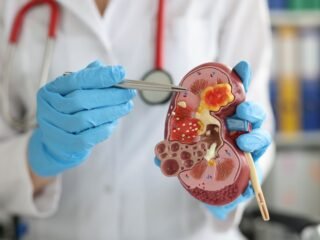 Dr Subhash Kumar Wangnoo, senior consultant endocrinologist and diabetologist, Indraprastha Apollo Hospital
Dr Subhash Kumar Wangnoo, senior consultant endocrinologist and diabetologist, Indraprastha Apollo Hospital
Diabetes develops when the pancreas doesn’t work properly, or when the body doesn’t use insulin properly. There are different types of diabetes. The most common in children is type 1 diabetes, previously known as juvenile diabetes.
It is an autoimmune disease triggered by some unknown environmental factors like viral infections etc. Type 1 diabetes is a lifelong condition that must be managed with regular injections of insulin.
Type 2 diabetes is more common in people who are above 40. It develops when the body stops using insulin properly. It is becoming more common in younger adults, but it is very rare in young children.
Very rarely, babies are born with diabetes. This is called neonatal diabetes and is caused by a problem with the genes. Neonatal diabetes can vanish by the time the child is 12 months of age, but the diabetes usually returns later in life.
Understanding Type 1 Diabetes
The causes of type 1 diabetes are not known, although it does run in families. There is nothing much to do to prevent a child from developing type 1 diabetes.
Type 2 diabetes is linked to being overweight and having a poor diet. Even though type 2 diabetes is very rare in young children, people are more likely to develop the condition later if they are overweight or obese as children. Make sure that the child eats a healthy diet, exercises regularly and does not become overweight will help protect them against diabetes in the future.
If you had diabetes when you were pregnant (gestational diabetes), your baby is at increased risk of developing type 2 diabetes later in life. Most type 2 diabetes can be prevented by maintaining a healthy weight, being physically active and following a healthy eating plan.
YOU MAY LIKE TO READ: Study Finds Signs Of Type 2 Diabetes In Children As Young As 8 Years Old
Early Symptoms Of Type 1 Diabetes In Children
It may be hard to assess the symptoms of type 1 diabetes in young children. Symptoms generally develop quickly, over a few weeks, and include:
- Feeling very thirsty
- Feeling being very hungry
- Frequent urination – your child might start wetting themselves again if they are toilet trained
- Feeling tired and weak all the time
- Losing weight without any explanation
- Having blurred vision or other problems with eyesight
- Having a yeast infection (thrush)
- Having fruity-smelling breath
- Being irritable, restless or moody
If your child has any of these symptoms, consult a doctor. It’s very important to treat diabetes since it can lead to serious problems over time such as heart disease or damage to the kidneys, nerves, eyes and skin.
Diagnosis Of Diabetes
Diabetes is diagnosed with a blood test. The child may need to fast overnight first. They may also have a urine test. If they have diabetes, your child will likely have regular blood tests to check their blood sugar levels, cholesterol and whether their thyroid and kidneys are working properly.
YOU MAY LIKE TO READ: Regular Glucose Monitoring Helps Young People With Type 1 Diabetes Achieve Better Glycemic Control
Tips For Prevention Of Diabetes In Children
- Get more active. Go for walks, play ball, or go to the park for 60mins a day.
- Cut back on sugar. Limit sugar-sweetened drinks and juice.
- Offer healthy snacks. Focus on vegetables, fruits and whole grains.
- Limit screen time. That includes TVs, computers, tablets, and phones.
- Eat dinner as a family. Keep the TV turned off.
Image: Unsplash








